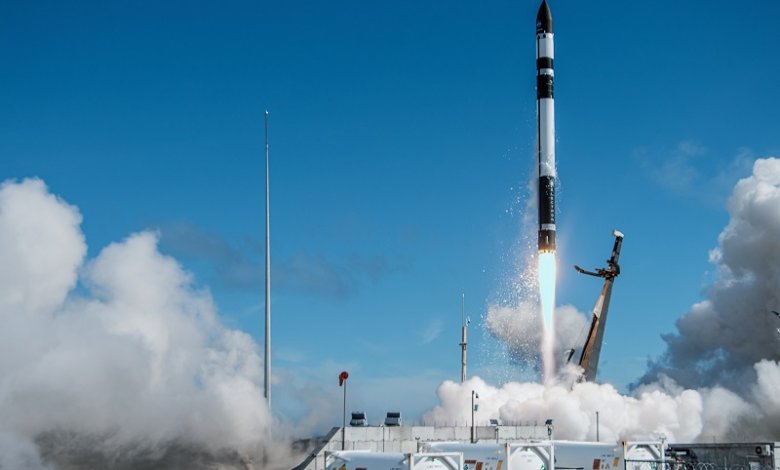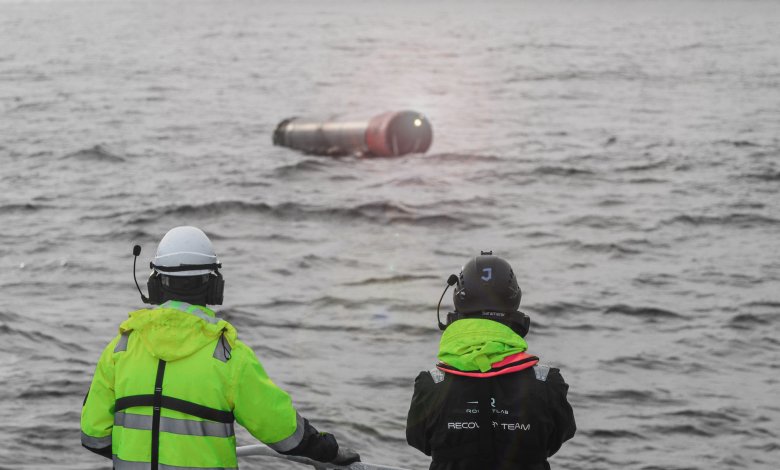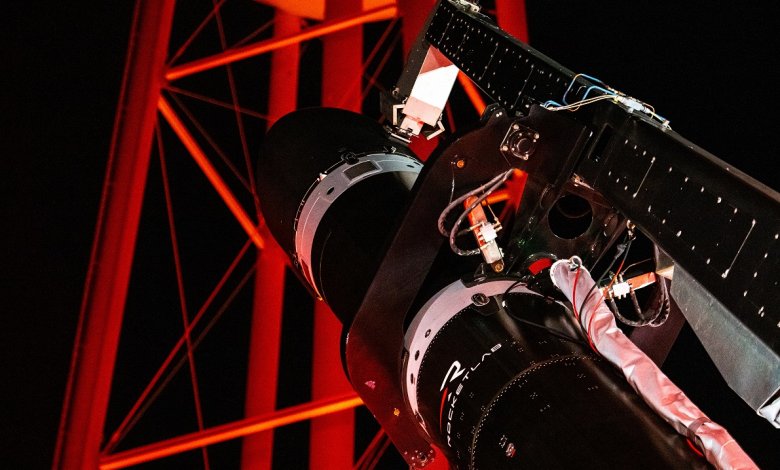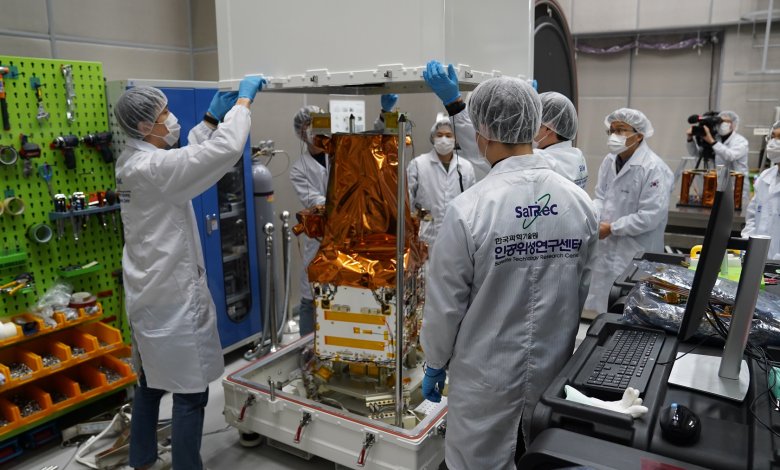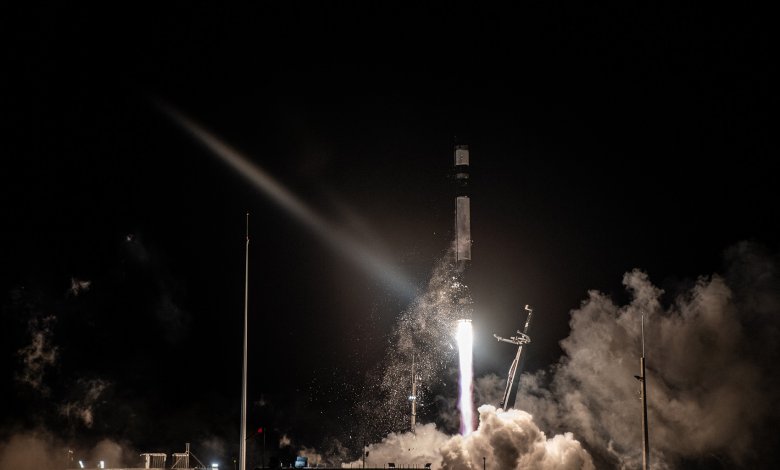Rocket Lab Celebrates 100th Rutherford Engine Build
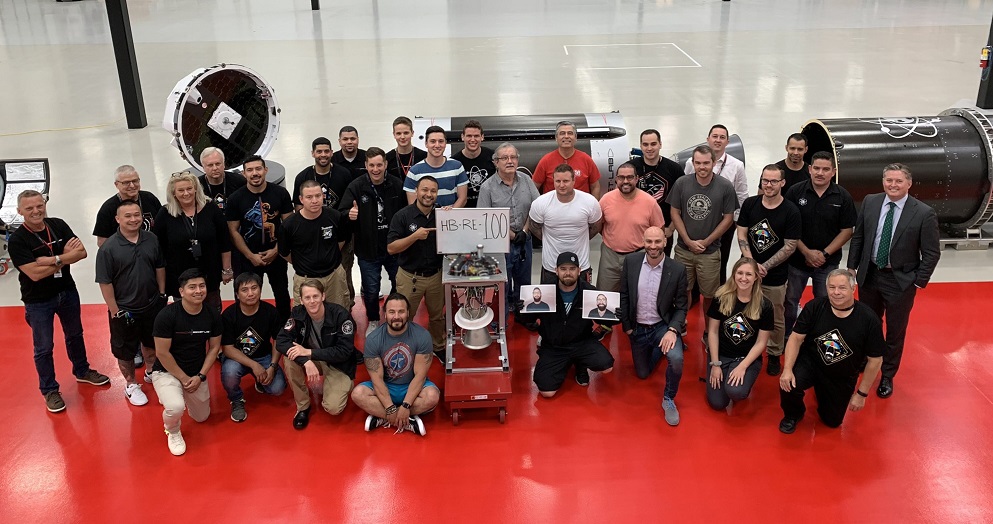
Rocket Lab Celebrates 100th Rutherford Engine Build
Since the Rutherford engine’s inception in 2013, Rocket Lab has produced 100 flight-ready engines at its Huntington Beach Headquarters, flown 70 of them to space and conducted more than 850 successful engine test fires.
Huntington Beach, California. 8 July 2019 – Rocket Lab, the global leader in dedicated small satellite launch, is celebrating completion of the company’s 100th Rutherford engine.
Rocket Lab began development on the world’s first 3D printed, electric turbo-pump fed engine in 2013. Within the same year, Rutherford was test fired for the first time, marking the beginning of a new generation in rocket propulsion. Today, 70 Rutherford engines have been launched to space on Electron missions, the most recent being the ‘Make It Rain’ mission launched on 29 June 2019 from Rocket Lab Launch Complex 1.
Rocket Lab CEO Peter Beck says Rutherford’s unique 3D printed design was developed with the single-minded goal of producing a reliable and high-performing rocket engine that could be manufactured quickly, efficiently and in high-volumes.
“The Rutherford engine has played an integral part in enabling Rocket Lab to make frequent and reliable launch a reality for small satellites,” says Mr. Beck. “It’s a testament to our innovative design and manufacturing teams that we’ve achieved everything we set out to do in just a few short years; an entirely new type of rocket engine that delivers unmatched performance, boasts a proven record of 100% launch reliability and can be manufactured quickly and efficiently.”
Rocket Lab’s Vice President of Propulsion Lachlan Matchett has led the Rutherford engine program since its inception, and later played an integral role in the development of Curie, the 3D printed propulsion system on Electron’s innovative Kick Stage.
“Rutherford’s unique design certainly went against the grain of traditional rocket propulsion systems, so to make it to 100 flight-ready engines, more than 28,000 seconds of engine test run time and seven successful launches is a proud moment for the team,” says Mr. Matchett.
To meet a growing launch manifest, Rocket Lab has recently expanded its propulsion manufacturing and test teams, and also increased its 3D printing facilities in Huntington Beach to produce 200 Rutherford engines in the next 12 months. The engines will be integrated onto Electron vehicles for lift-off from Launch Complex 1 in New Zealand, as well as Launch Complex 2 at the Mid-Atlantic Regional Spaceport in Wallops Island, Virginia USA.
About the Rutherford engine:
Weighing just 35 kg each, Rocket Lab’s Rutherford engines are the world’s first 3D printed and electric pump-fed engines to be launched to space. The engine is named after New Zealand physicist Ernest Rutherford, a Nobel laureate famous for his work in discovering radioactive half-life and being the first to split the atom.
The Rutherford engine’s production scalability is facilitated by additively manufactured, or 3D printed, primary components. With a 3D printed combustion chamber, injectors, pumps, and main propellant valves, Rutherford has the most 3D printed components of any rocket engine in the world. These primary components can be printed in 24 hours, drastically reducing production timelines.
Rutherford engines are used as both a first stage and as a second stage engine, with sea level versions on Electron’s first stage producing 24 kN (5,500 lbf) of thrust and has a specific impulse of 311 s (3.05 km/s), while the vacuum optimized version operating on Electron’s second stage produces a max thrust of 24 kN (5,500 lbf) of thrust and has a specific impulse of 343 s (3.36 km/s). There are nine Rutherford engines on Electron’s first stage and a single vacuum optimized version on the second stage.
Instead of being powered by traditional gas turbine pumps, Rutherford uses an entirely new propulsion cycle of brushless DC electric motors and high-performance lithium polymer batteries to drive its propellant pumps. This cuts down on much of the complex turbomachinery typically required for gas generator cycle engines, meaning that the Rutherford is simpler to build than a traditional engine but still can achieve 90% efficiency.
Rutherford engines are manufactured at Rocket Lab’s headquarters in Huntington Beach, California, USA. They are shipped to Rocket Lab’s New Zealand facilities for testing before integration with the Electron launch vehicle and eventual launch from Rocket Lab’s private orbital launch facility, Launch Complex-1, on the Māhia Peninsula.



